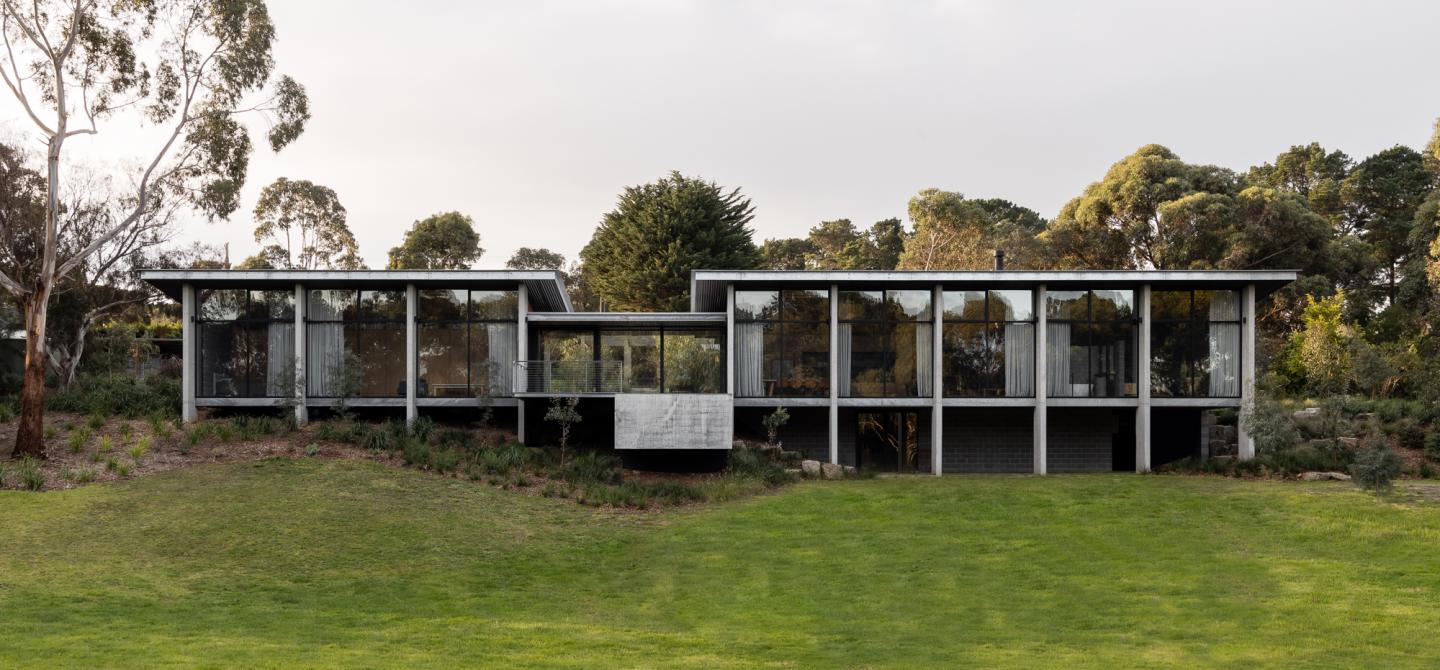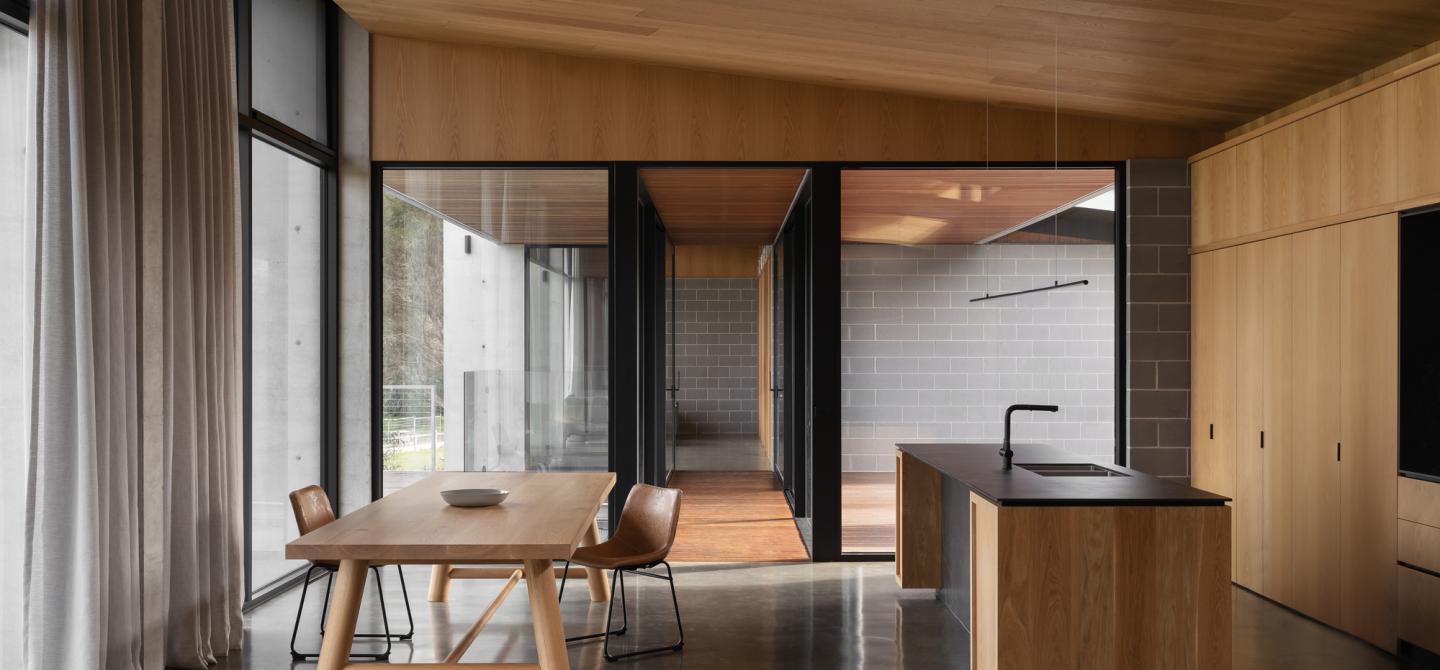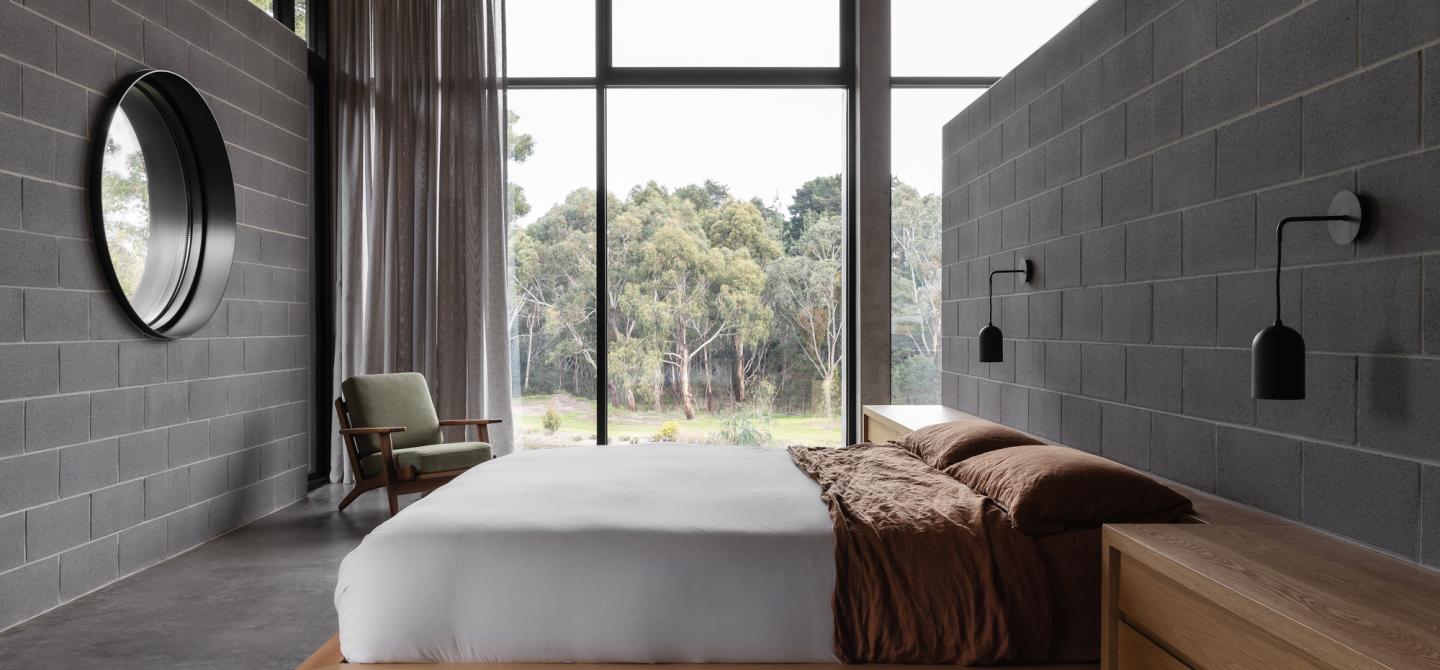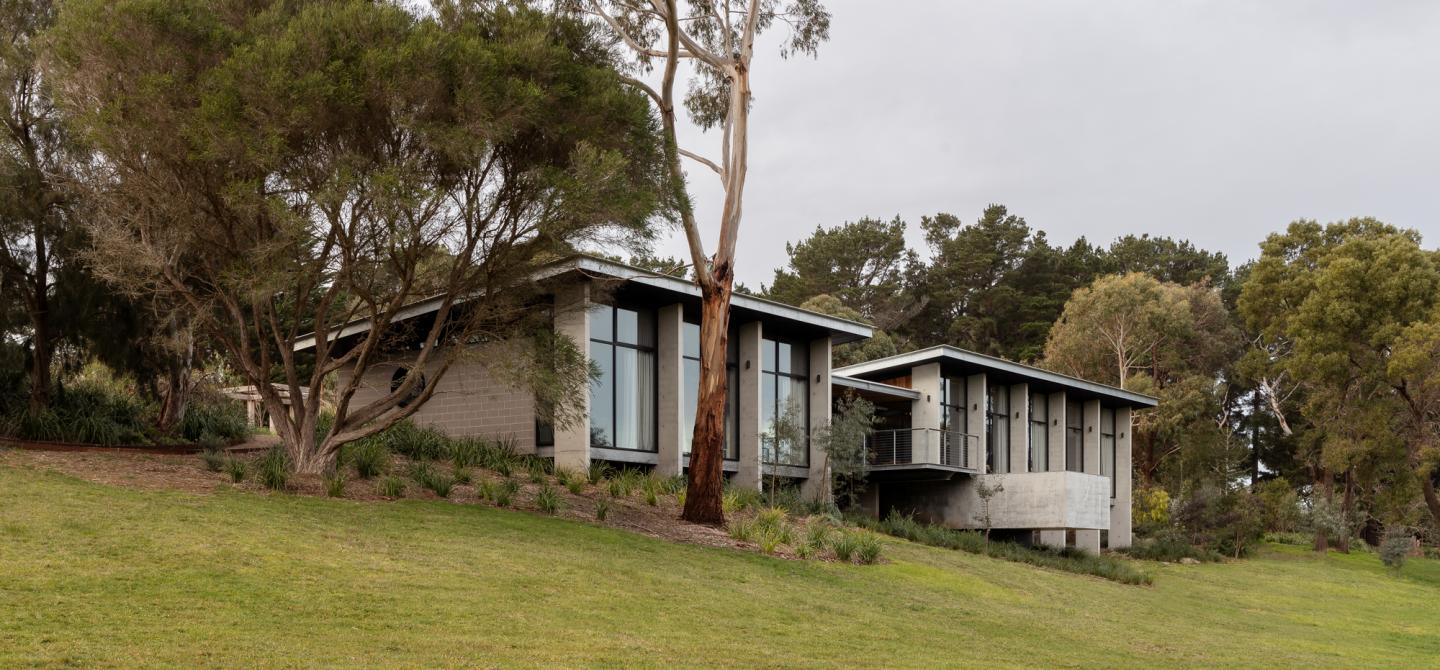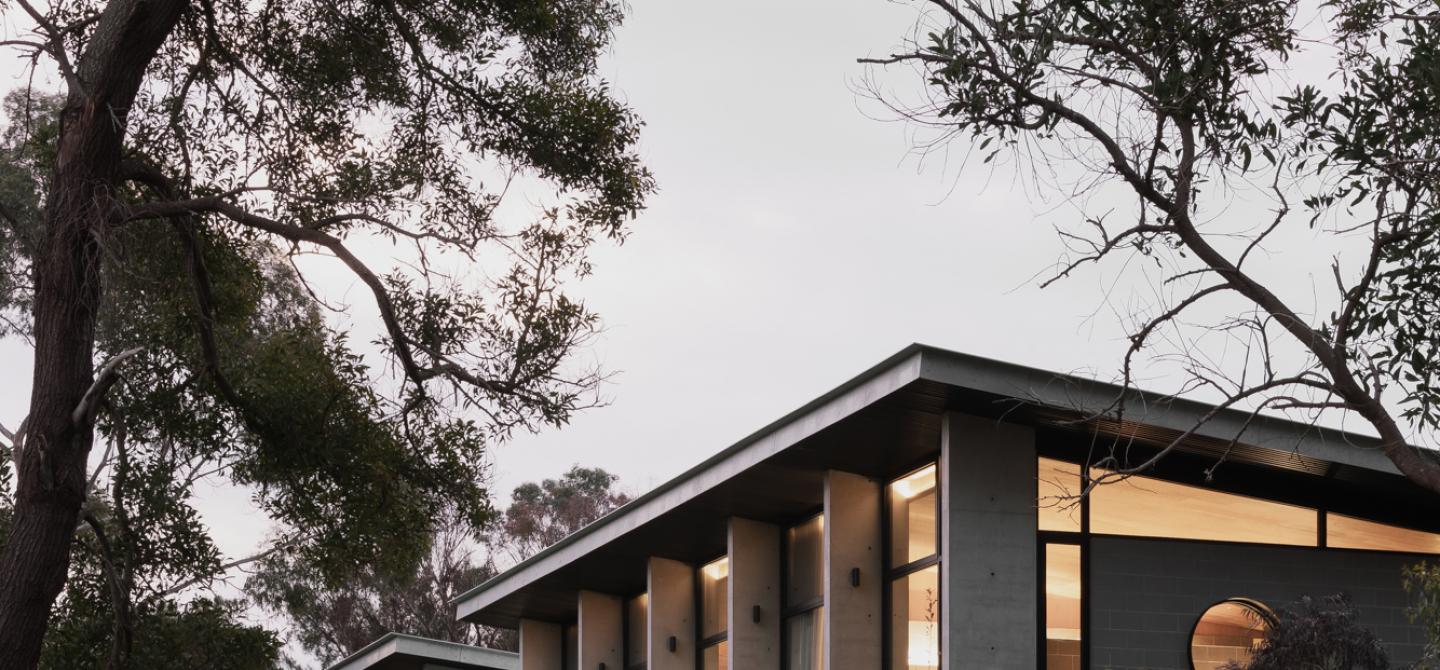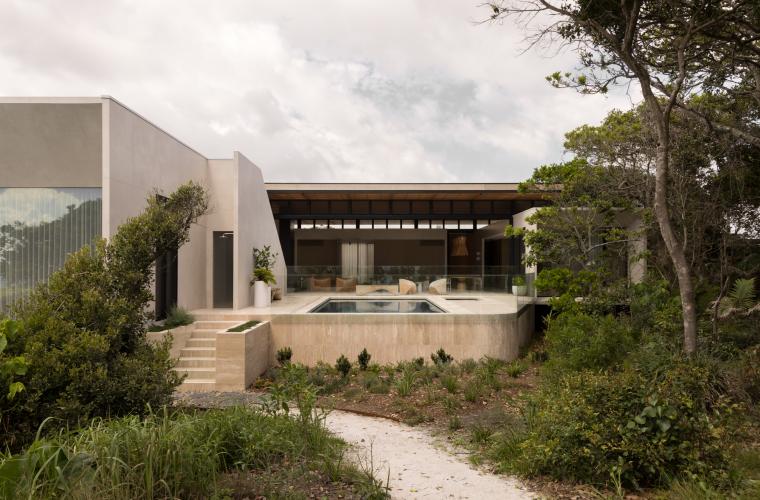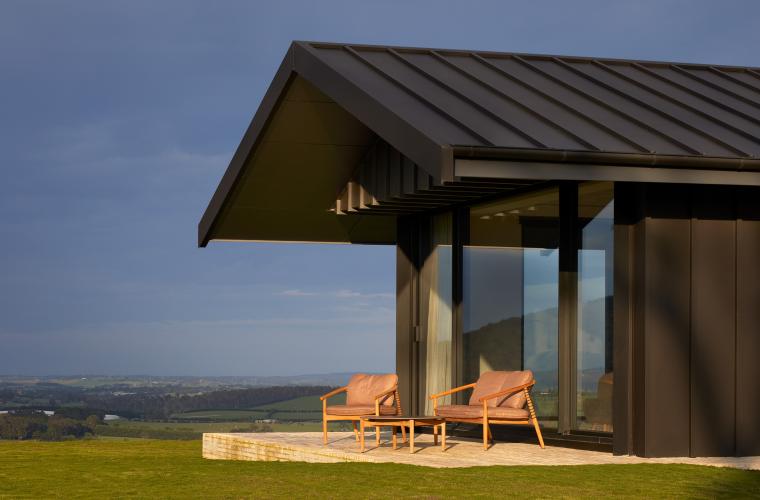Merricks House by Aktis
21st April 2023
Sitting confidently within its context, Merricks House presents a bold and rhythmic occupation of a rural site in Melbourne’s south-east. Working with the challenges of the site and a linear arrangement of spaces, Aktis Architects has created an elegant light filled home both connecting with the landscape and standing in contrast to it.
To hear Bruce Katsipidis, Director of Aktis Architects, speak of the process of design for this project, it becomes clear it was a journey of discovery. “It originally began as a half-submerged concept,” Bruce reveals of the initial aspiration to integrate the house discreetly within the landscape. As the concept navigated challenging conditions of its environment though, a contradictory strategy emerged. “The fact that it was a rural setting, not a forest, meant there seemed to be no real reason to hide the building.” The concept for this family home subsequently pivoted to become a celebration of material and structure through the creation of a monumental form, anchored with an unapologetic strength of presence in the landscape.

For the most part, the rural site is unencumbered by complex topography and remains flat, notwithstanding a level change of three metres along its northern half. It is at this point that the building is placed, using the rise in the land to its advantage to navigate challenges of being located within a flood plain. Alongside the risk of potential flooding, the orientation of the site presented a design challenge. With expansive views across native vegetation of the Mornington Peninsula to the south, the architectural response was to adopt a monopitch roof to open the house to these views and simultaneously create an opportunity to introduce skylights to wash the interior with sunlight from the north.
Upon approach, the house presents a modest elevation composed of two raking roofs, each perched above a masonry box. These forms allude to an almost nostalgic modernism if not for refreshing moments of whimsy; circular apertures strategically punctuate the rigidity of the strong façades to offer curated and intentional views to the landscape from the interior. A gravel driveway meanders through dense planting to arrive at a porte cochère lined with vertical timber cladding. The warmth of this arrival reflects a manifestation of the client’s desire to engage with natural materials, harking back to the beauty of the Australian landscape.

The plan of the building is composed as a linear arrangement of spaces ordered to make the need for circulation spaces and corridors redundant. This spatial planning and a concrete frame structural system – selected for its visual strength and structural durability in potentially adverse climate conditions – defines an ordered architectural language. “The grid determined the composition of the elevations to some extent,” Bruce recalls of the process of exploring the design resolution for the building envelope. “The grid system also created a sense of order whereby the building sits in contrast to the landscape.” The result of this structured strategy is a façade composed of a strong yet elegant rhythm of tactile elements; a colonnade of concrete columns separated by expansive windows layered with the softness of strategically placed drapery.
The project brief stipulated the need for a bedroom wing for the clients’ children to be included in the design but to maintain some separation from the primary spaces, a planning exercise that resulted in a natural incision along the length of the southern façade. It is at this point that a cantilevered concrete volume – a swimming pool – strikes a moment of relief in the rhythm of the building fabric. Here, a small communal courtyard is created to separate the bedroom pavilion from the main volume, simultaneously offering privacy and shared amenity between wings of the house.

Much like the treatment to the exterior of the building, the clients expressed a strong preference for natural materials in the interior with a pared-back palette and minimal applied finishes. The raw materiality of the structure is expressed in lieu of plastered or painted finishing with concrete and masonry elements transcending the enclosure lines to blur interior and exterior boundaries. Timber is used generously for wall linings and kitchen and bedroom joinery to inject a richness and warmth into the interior spaces with a textural variation in juxtaposition to the smooth burnished concrete floors. A folded timber ceiling accommodates skylight penetrations to maximise sunlight and introduces a warm interior topography suspended above living spaces.
The minimal palette of concrete and timber creates a canvas against which this house celebrates the quality of light throughout the day – a key experience developed through a collaborative process of design between architect and client, which Bruce describes as a robust and iterative process. “All aspects of the building were continually discussed; details and materials were adapted to suit.” The outcome of this collaboration is experienced in the sensitive overlay of ephemeral moments of light moving through the spaces, a contrast against the solidity and permanence of the building’s physical elements.

Merricks House presents an architecture of confidence, able to harness the benefits of its site and landscape and still maintain a sense of wonder in its monumental scale. Considered moments of interruption used to break the authority of the form function as opportunities for curated connection to the landscape and as delightful reminders that this house is for living in. The success of this building is not only defined by its gallery-like presence but by a capacity to also maintain an interspersing of intimate material details that are sensitive to the human scale of its inhabitants.


Words By The Local Project
https://thelocalproject.com.au/articles/merricks-house-by-aktis-architects-issue-11-feature-the-local-project/
Architect | Aktis Architects
Build | Lexicon Constructions
Fabricator | Element Windows
Photography | Timothy Kaye


